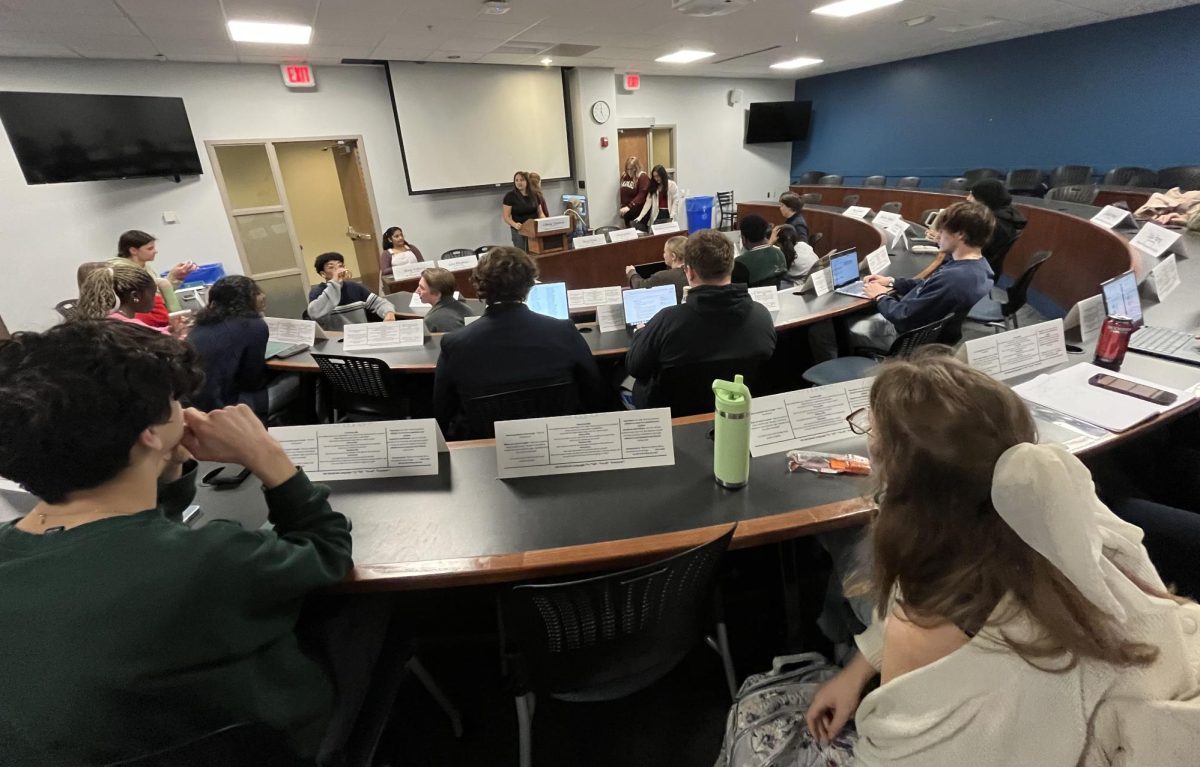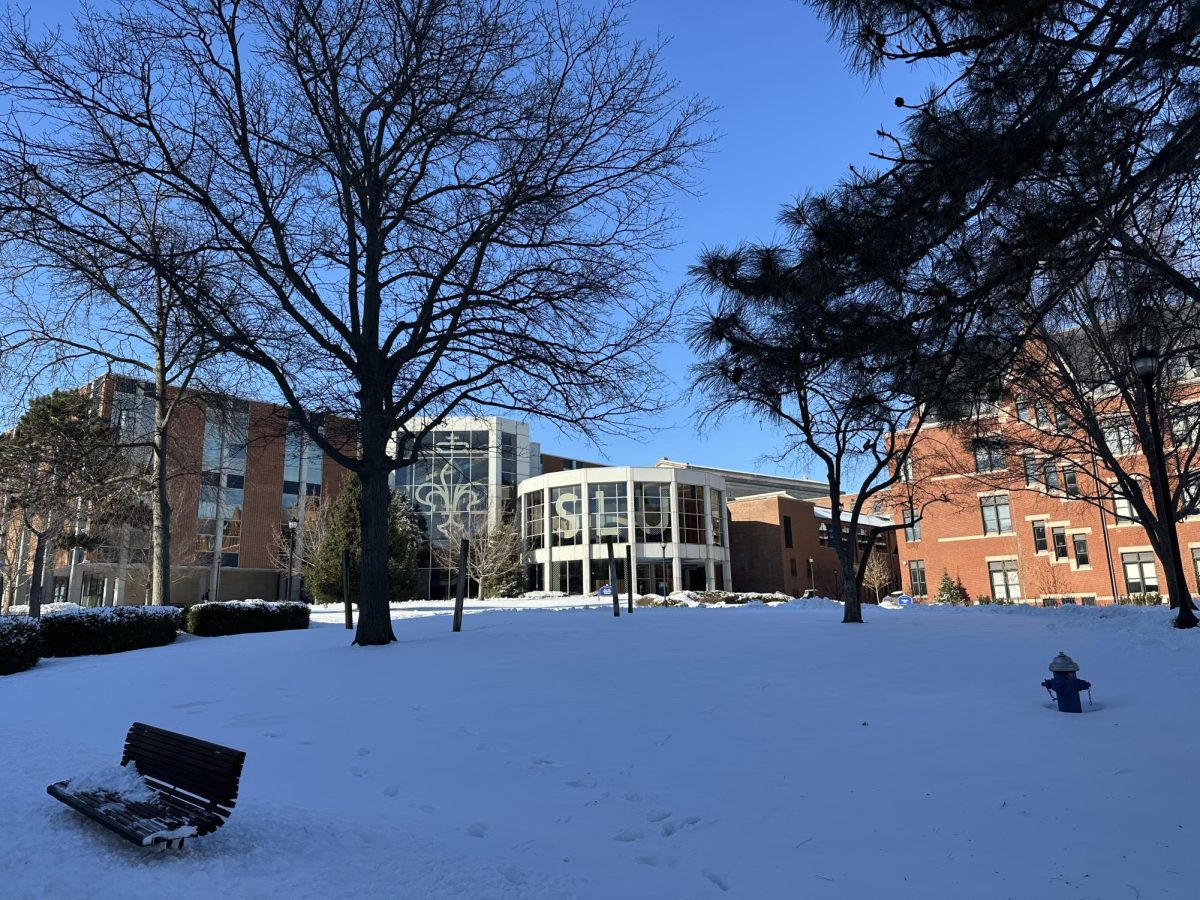On-campus energy just got a new wind. An innovative urban windmill is being designed and developed at Parks College of Engineering, Aviation & Technology. This hollow, cylindrical turbine coined the “hubless windmill” has the potential to generate electricity on campus as early as March 2010, with funding from Saint Louis University and local industries.
“This is the right time and the right technology. Now is the best time to get renewable energy. This … can really bring wind energy to cities,” said inventor and associate professor of the Department of Aerospace and Mechanical Engineering, Sridhar Condoor. “There is no reason why this cannot be implemented on campus.”
A prototype is currently being built in the basement machine shop in McDonnell-Douglas Hall. This prototype will be 6 feet long by 6 feet wide and is expected to be complete by March. Depending on where it is placed, this prototype is estimated to produce about .75 kilowatts of power, the equivalent of about three-fourths of the energy requirement for a medium-sized home.
Condoor and co-inventors Khoa Nguyen and Mike Reichle started the project two-and-a-half years ago, as a senior project for the mechanical engineering program. Reichle and Nguyen, both SLU alumni of 2007, started out working on a vertical axis wind turbine that could be implemented in an urban environment.
“For our senior project, we decided to design a vertical axis wind turbine. We wanted to improve our design so [Condoor] suggested we take out the central shaft and replace it with a ring frame,” Nguyen said.
Wind turbines generate electricity from the flow of the wind on the blades of the turbine that move a central shaft, creating mechanical motion. Horizontal axis turbines are the most common, as they are large and are being built in rural wind farms. This renewable energy source continues to grow, as it produced about 1.5 percent of the total worldwide electricity usage last year. According to the U.S. Department of Energy, electricity usage has doubled since 2005.
“In this part of the country, energy generated from the wind is going to be a major player … in the expansion of renewable energy sources,” Professor of Geophysics David Crossley said.
The hubless windmill differs from common horizontal axis turbines because it can be attached to an existing structure, allowing it to fit right into an urban or rural infrastructure. The design replaces the central shaft that is common in most wind turbines with a ring frame that features airfoils, which rotate around a large gear on the sides, eliminating torsional vibrations.
The airfoils act as the blades in the cylindrical design that provide a lift at high wind speeds and a drag at low speeds. According to Condoor, these windmills can potentially revolutionize the use of wind power in our everyday lives by bringing it to the place where we live and work.
“We wanted to design something novel for an urban environment that could be built into the existing city infrastructure,” Condoor said. “Bringing it to urban skylines is key because it is generating local power for local needs.”
In December, the inventors were granted a patent publication, meaning the specifics of the project are available to the public. The inventors are expected to receive a full patent in about a year. The Office of Innovation and Intellectual Property at SLU is handling the patenting process of this project.
“This one of our exciting projects, we look forward to making progress on it in the near future,” head Innovationist at the Office of Innovation and Intellectual Property, Thomas Meyer, said.
Meyer’s office handles the patenting process of primarily faculty ideas and inventions, and the University receives 60% of the royalties that come from them. So in this case, the inventors of the hubless windmill will receive 40% of the royalties for their project. According to Meyer, Rixan Associates, Inc. is currently interested in licensing the windmill, meaning it will develop, build and distribute it across the country.
SLU is currently planning on funding about $35,000 to the project, with the final decision coming next week.
“With all the funding and support, this project will soon become a reality,” Nguyen said.
Upon its intended completion in March 2009, the hubless windmill will be tested for efficiency and will be compared to a vertical axis turbine to measure the differences that come with the two designs.
“I think this is a good project to demonstrate that the University is thinking in the right direction, and if it is placed on campus it will certainly attract attention,” Crossley said. “In all ways, this project should be commended.”
The project has already received attention from science magazines, including Popular Science and New Scientist, and it has been featured in a renewable energy documentary on the Discovery Channel.








